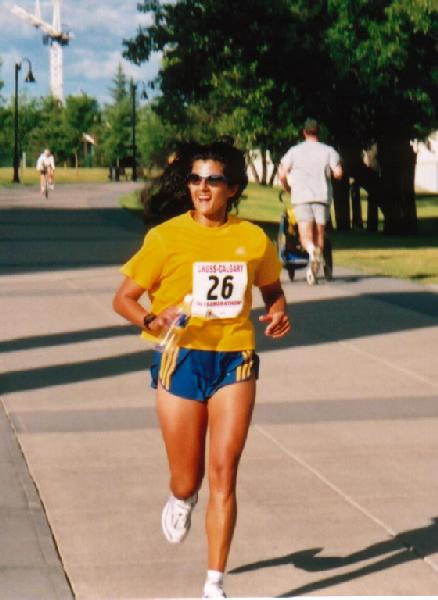We are always at risk in today's world, but there are a number of
things we can do to make our runs safer. Some of these tips will seem
strange to people in some areas and all too oversimplified to others:
1. Always Carry identification. Carry your name, address, a friend
or relative's telephone number on the inside sole of your running shoe
or tied on a lace. Carry a change for an emergency telephone call.
Don't wear any jewelry (perhaps wedding ring).
2. Make sure friends and/or relatives know where you will be running.
Leave a description of the routes somewhere.
Run in familiar areas and alter your route pattern. Know the location of
telephones, businesses and stores on your routes.
Avoid unpopulated areas, deserted streets and overgrown trails. Especially
avoid unlit areas at night. Run clear of parked cars and bushes.
3. Stay alert. The more you are aware, the less vulnerable you are.
4. Don't wear headphones. Use your hearing to be aware of your surroundings.
5. Acknowledge strangers but use discretion. Look directly at others, be
observant and keep moving.
6. Always run against traffic so you can easily see approaching automobiles.
7. Wear reflective material if you are running before or after dark.
8. Call the police immediately if something happens to you or if you notice
anything out of the ordinary during your run.
9. Carry a whistle or a noisemaker pepper sprays in case of dogs.
10. Run with a buddy.
B. Cold Weather Running:
Some cold weather tips
Adjust the intensity of your workout. It doesn't matter whether or not you
cover the same distance you might on a summer's day. You are out running. Decide
on a time rather than the number of miles.
Remember up to 50 per cent of the body's heat is lost through the head. Wear
a balaclava or toque to keep you warm.
Warm up properly and start at a comfortable pace before easing into a tempo that
is slower than your normal training pace.
Shorten your stride to improve your footing on icy roads. Many runners insert
a handful of small drywall screws on the outsides of their soles to give them greater
traction.
Run into the wind and coast home with it at your back.
Run with a group if possible. If you run by yourself, find a route that allows
you to cut your run short and where help is readily available.
Don't run lonely trails by yourself. If you slip or fall on icy terrain, a
twisted ankle or broken bone could leave you helpless.
If you are running with a partner, check each other's face regularly for the
while telltale signs of frostbite.
Mittens will keep your hands warmer than gloves.
Chapstick your lips, nose and ears.
Save your speed work for dry, indoor surfaces.
I know people who run outside when it is minus 30șC. Air is warmed by the
body before it enters the lungs. If you find breathing cold air uncomfortable,
then wear a face mask to help warm the air.
Shower and change into dry clothes as soon as you can after your run.
Gord
- Women in Motion
From
Around the 'Net
enhancing
female performance






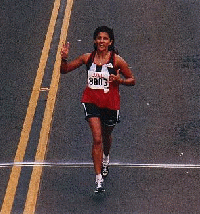
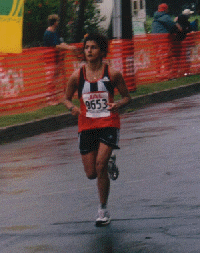
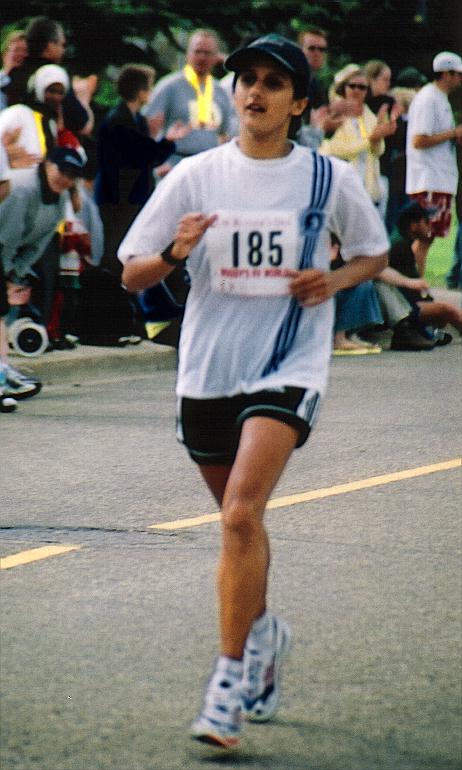
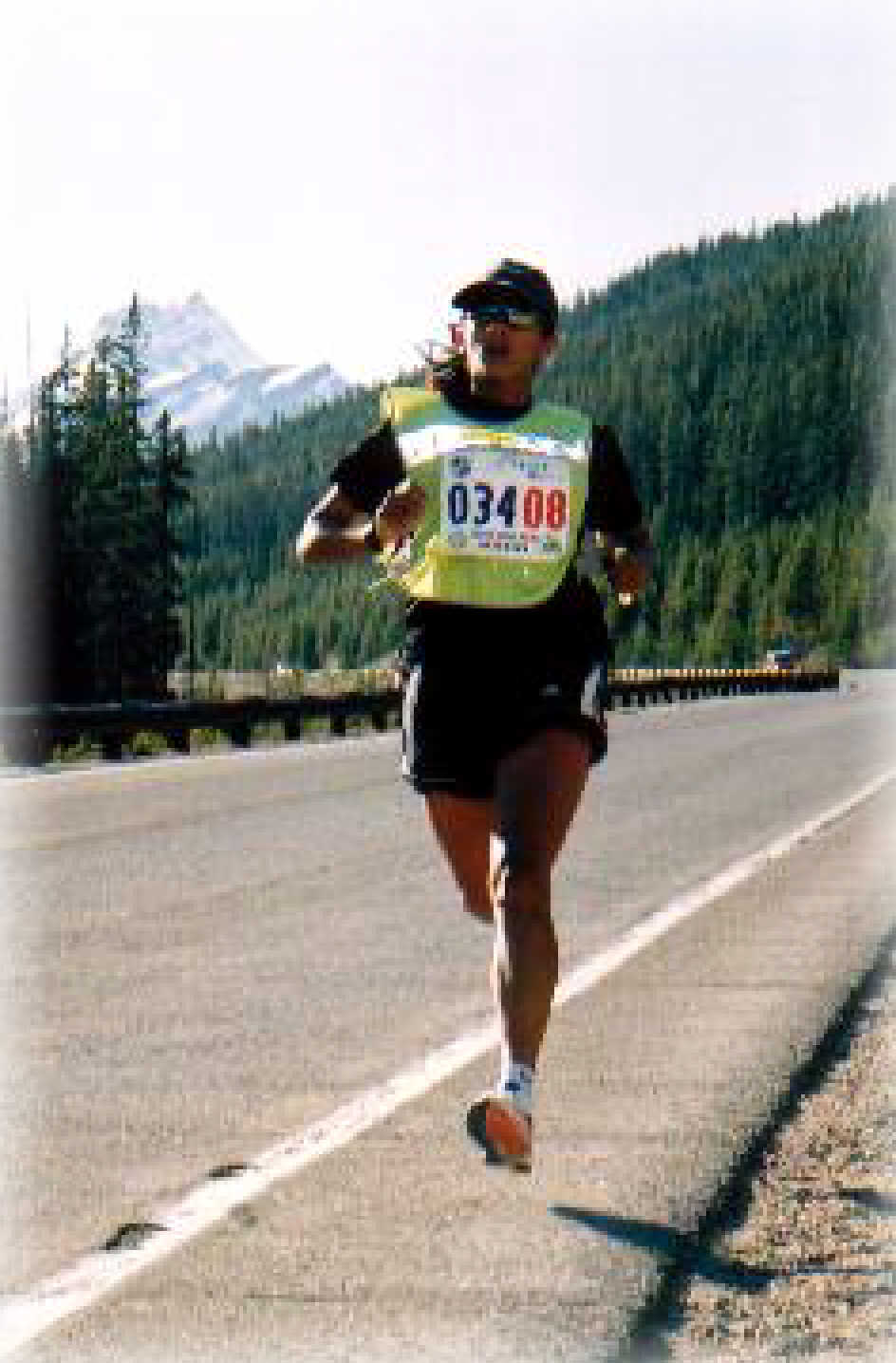



1. Is someone you know having a stroke?
Do you know how to spot the signs and symptoms of
a stroke? What would youto do if you or someone
around you was experiencing stroke symptoms? The
sooner one is diagnosed and treated, the better
the outcome. You have two hours from the onset of
the symptoms to actually receive the medication
and/or treatment to help prevent permanent
damage.
A stroke occurs when the brain does not receive
enough blood, causing it to not work properly. The
signs and symptoms of a stroke are:
- Slurred speech or inability to speak.
- Numbness or tingling in an arm and/or leg.
- Facial drooping (one side becomes flaccid).
- Blindness.
- Changes in behavior and/or memory.
(Body symptoms may affect one or both sides.)
If you suspect a stroke, seek medical attention
immediately and note the time of onset of
symptoms.
2. Muscle Tone
A total of 600 muscles work in different
combinations in the body. The muscles are
slightly contracted and firm, which is called
muscle tone. An exercise program including the
health-related components of fitness (strength,
muscle endurance, flexibility,
cardio-respiratory) will improve muscle tone. The
muscles become larger and muscle fibers become
stronger as the muscles are challenged.
Exercising three to four days a week will improve
muscle tone. Alternating weight lifting days with
aerobic activity is necessary for the muscle
fibers to grow larger. It is important for the
fibers to have periods of rest and healing
between weight lifting workouts.
Heredity is an important factor in muscle tone.
It determines the ratio and the types of muscle
fibers in the body. There are two types: fast and
slow twitch fibers. Fast twitch muscles work
rapidly but tire quickly (sprinters). Slow twitch
muscles work for a longer time without tiring
(marathon runners). Exercise will increase muscle
tone, but it will not change the types of fibers
found in the body. However, without a workout
program, the muscles will definitely lose muscle
tone as a person ages--especially in the stomach
and buttocks.
3. Carbos - the fuel of choice
For endurance athletes, carbohydrates are the
fuel of choice
A few high-protein, high-fat diets are making
their way through the masses with headlines and
testimonials suggesting that they are the ticket
for fast weight loss. And indeed, many have found
success with these diets. But for endurance
athletes, all the signs still point to
high-carbohydrate diets for good health and
performance.
Asimba.com offers a defense of the mighty
carbohydrate, with a quick primer on the science
behind fueling an endurance athlete.
In addition, there are some ballpark numbers on
how many calories the average athlete burns in a
variety of grueling events .
For the details, check out the full article:
http://www.asimba.com/lifestyle/magazines/article/nutrition/nut_gen_ntr_3158.html
4. The Importance of Form and Function
A good runner is an efficient runner, whose
economy of motion and energy means more left over
for going the distance. That means form and
posture are crucial; the way that a runner
carries herself determines a great deal about the
efficiency of her running. Active.com offers a
guide to proper form, including the way you
should hold your head, arms, hands, shoulders and
hips.
"Some of the more common mistakes,"
writes Active.com, "are saggy shoulders,
arms hanging too loosely by the runner's sides or
moving too far across the chest, the dreaded
knock-kneed syndrome, or a runner actually
sticking both thumbs straight up (affectionately
known as 'The Fonz')."
For more, check out the full article at
Active.com:
http://www.active.com/story.cfm?story_id=5299
5. Your Racing Flats
"Save your racing flats for races or a
serious speed session on thetrack. Flats
(weighing less than 10 ounces) make you feel
fast, buttraining shoes offer better protection
from injuries."
6. Use For Old Socks
"Use an old pair of tube socks as gloves
during a cold race. They're
cheap and effective, and you can simply toss them
aside if your hands
get too warm during the race." - Parker
Morse, RW online editor
7. Calling All Clydesdales and Athenas
A growing number of races are including
Clydesdale divisions for the heavier runner. A
Clydesdale athlete is any male runner or
triathlete over 200 pounds. Women over 145 pounds
are called Athenas. Each weight group is divided
into two age groups: an open category for 39 and
under, and a master's division for over 40.
Running "large" requires a modified
training program. The training principles are the
same, but increasing intensity requires caution.
In the weight room, big runners often tend to put
body muscle mass on easily and end up with
unwanted bulk. An exertion of 6 or 7 on a scale
of 1 to 10 may be all that is needed. Also, large
runners often require more water than a smaller
person. The recommended amount may not be enough.
8. Tapering for a Marathon
Be careful when you reduce your mileage before
the event. Unwanted weight can
accumulate. As you lessen the mileage,
decrease the amount that youtake in. If you
are a calorie counter, a guide would be about 100
fewer calories for each fewer mile that you run
during this period. Each mile you run or
walk burns about 100 calories. This
balances out the reduction in exercise.
9. An Extra Push to Get You Out of the House and
Running / Walking
You have the best of intentions of being a
consistent runner as it gets cooler, but you
don't keep to them. Here are some
suggestions
that may prove helpful:
Get out the door. Lay out your
clothes the evening before. Make it easy to
get dressed. Put on your running shoes to
pick up the morning paper. Whatever it
takes, overcome the inertia of lounging in bed
for a little more time and perhaps skipping a
day's planned workout.
Reward yourself for your efforts. Set some
achievable goals and some concrete rewards when
you attain your goal.
Have a partner.
Seek out some new routes to periodically
explore. Variety is good.
|
Words of Inspiration
"You can succeed by finishing last"
- Joe Henderson -runner and writer"
It is important to notice the first finish and also the last finisher.
Notice the face of the last finisher, you will see contentment.

Fariyal Samson winning the Okanagan International Marathon
The
Running Woman Message Board in Diet and Fitness
The Running Woman Message board continues to be active
although it shows a reduction in the number of posts in
September. Because a number of our members are university
and college students, this time of the year finds them
back at studies. Let's hope they remember the benefits of
running and return soon to our board.. We continue to
offer advise to all posts. Thanks to all of you who have
provided assistance to members old and new. Good Luck and
Continued Running to all.
Gord
The
Runner's Club
The RUNNER'S CLUB is still quiet, but with the number of
members just over 500. If you are a member, please take
the time to ensure that your email address is the one you
want to use. Members with incorrect email address will be
deleted from the membership as we are unable to contact
them with club information.
A reminder that two features of the CLUB still remain the
ability of members to communicate with each other
privately in the CLUB and the ability to arrange to chat
with each other in the 24 hour chat facility.
Members
have been asked to post on the calendar, their upcoming
race events for the year.
Good Luck and Great Runs
Gord
About
This Newsletter
A reminder that experts - we are not. Information
presented here is a collection of research with a taste
of experience and opinion added for flavour. We don't get
upset if someone disagrees with anything that has been
said or written. In our experience with running groups
here at home, it is difficult to get agreement on most
anything. If it works for you, then it works.
Neither Women in Motion nor the author of this newsletter
provides professional medical advice. The information in
this newsletter is intended to help you better understand
running issues. It is not intended to replace the advice
of a physician. If you read something in the newsletter
that contradicts what your physician tells you in any
way, always follow your physician's advice.
SUBSCRIBE/UNSUBSCRIBE INFO
You are receiving access to this newsletter because you
have subscribed via Listbot. If you do not wish to have
future newletters sent to you, please use that same
system found on the home page to unsubscribe.
If you have any suggestions for topics or questions
please email us. We would like to publish a monthly
newsletter that reflects the interests of the female
runner.
Gordon Samson, Editor
Women in Motion
LEGAL STUFF / SUBSCRIPTION INFO.
"Women in Motion Newsletter" is free, but its
articles are
copyrighted. No one may use the content without
permission of
the author and "Women in Motion". So please let
us know if you
think the information here is important enough to be
re-written.
Spread the Word
Tell your friends they can get the email link to this
free monthly newsletter.
Gordon and Fariyal Samson
Women in Motion
Visit us at
run.to/womeninmotion
Practice
doesn't make perfect, perfect practice makes perfect.
-Fariyal Samson, B.PE, B.Ed
© Women in Motion
 Women in Motion November 10.2000
Women in Motion November 10.2000
